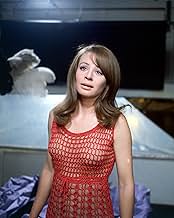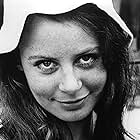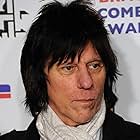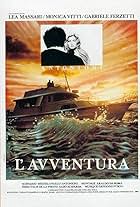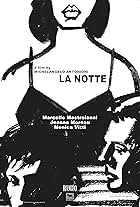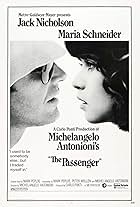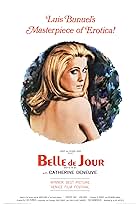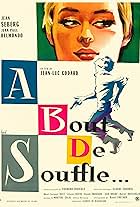A fashion photographer unknowingly captures a death on film after following two lovers in a park.A fashion photographer unknowingly captures a death on film after following two lovers in a park.A fashion photographer unknowingly captures a death on film after following two lovers in a park.
- Nominated for 2 Oscars
- 8 wins & 9 nominations total
Veruschka von Lehndorff
- Verushka
- (as Verushka)
Jeff Beck
- Self - The Yardbirds
- (uncredited)
Roy Beck
- Boy dancing In Ricki Tick Club
- (uncredited)
Charlie Bird
- Homeless Man
- (uncredited)
Susan Brodrick
- Antique shop owner
- (uncredited)
Robin Burns
- Homeless Man
- (uncredited)
Tsai Chin
- Thomas's receptionist
- (uncredited)
Julio Cortázar
- Homeless Man
- (uncredited)
Chris Dreja
- Self - The Yardbirds
- (uncredited)
Storyline
Did you know
- TriviaAmong the homeless men whose photos were taken by the David Hemmings character is Julio Cortázar, who wrote the original short story on which "Blow-Up (1966)" is based.
- GoofsWhen Thomas is frolicking with the two girls on the purple paper backdrop in the studio, two crew members, including a camera operator, can be seen just sitting there in the top right side of the frame.
- Alternate versionsSome of the music was rescored for the Warner DVD release, namely the latter part of the opening title music. The VHS releases' music remain intact.
- ConnectionsFeatured in Film Review: How I Learned to Live with Being a Star (1967)
- SoundtracksMain Title (Blow-Up)
Written and Performed by Herbie Hancock
Featured review
BLOW-UP is the story of a successful fashion photographer, Thomas (David Hemmings), who, whilst scouting for fresh subjects in a park one afternoon, photographs a mysterious couple in 'flagrante delicto.' Upon returning to his studio loft later that day, he develops the pictures and discovers that he has inadvertently stumbled upon a murder. Antonioni is not interested in the details of the murder itself, as in a typical detective story, but rather with how the protagonist's perception of the world, and his relationship to it, is altered by this event.
As a fashion photographer, Thomas is a creator of illusions that define a certain kind of young urban lifestyle and Antonioni's flagrant use of the loud, splashy, attention-grabbing colors of billboard advertising -- a visual association elevated to an unholy apotheosis in his next film, ZABRISKIE POINT (1970) -- brings to the surface the transient sensation and hollow artifice that lies at the heart of all pop culture consumerism. In his previous work, RED DESERT (1964), Antonioni spray-painted both the man-made décor as well as the natural setting as a means of giving concrete expression to the heroine's neurotic state of mind and her ameliorative aestheticizing vision of a world despoiled by technology and pollution. He does the same in BLOW-UP, painting doors, fences, poles, and the façades of entire buildings to emphasize the exhilaration and alienation that characterizes life in a large modern city.
Psychedelic colors make the 'real' world of the film seem exaggerated and hyperbolic like a fantastic 'surface' reality, while the 'captured' and reconstructed world of the photographs appears ominously stark, grainy, and documentary-like -- the bare, denuded 'essence' of reality. In the central montage sequence of the film, the camera -- in place of Thomas' eyes -- slowly moves back and forth from one photograph to the next, and likewise, Antonioni cuts back and forth from the pictures to the protagonist looking at them. Since the act of looking at these enhanced images effectively reconstructs an event that the protagonist -- and the audience -- never actually saw with the naked eye in 'real life,' technology is shown to reveal a new surface of the world that is normally hidden from view. Antonioni's own particular brand of phenomenological Neorealism is concerned primarily with the process of seeing through a camera as a way of exposing an ultimate truth, or a lack thereof, that underlies the surface of the world.
The curious self-reflexivity of this scene is an epistemological hall of mirrors: Antonioni's camera looks at Thomas looking at photographs which are blown up larger and larger so that eventually they become merely an abstract collection of dots, a Rorschach test in which almost anything can be read. Like the Abstract Expressionist paintings of the tormented artist son in Pasolini's TEOREMA (1968), the received cultural baggage and semiotic referentiality of the image is eliminated until all that remains is purest subjectivity of the spectator. And so, picture-making technology mediates reality only up to a point: once the threshold of referentiality has been crossed, the suspicion of a murder in the park gleaned from a series of enlarged photographs would seem to say more about Thomas' own paranoid state of mind than what his camera may or may not have recorded.
This subtextual aspect of the film has been compared to the controversy surrounding the various interpretations of the Abraham Zapruder film as a definitive and reliable record of the Kennedy assassination -- and particularly, the mystery of the notorious 'grassy knoll.' Also, the possible incidence of adultery and The Girl's desperate efforts to retrieve the film suggest the scandalous fallout of the Profumo affair. Vanessa Redgrave, with her thick, dark brown hair and affected temptress-naïf manner, hinted at by a schoolgirl outfit and arms folded seductively over her breasts, seems meant to evoke, for a British audience at least, then-recent memories of Christine Keeler.
BLOW-UP is full of visual and verbal non-sequiturs and nearly all the scenes are composed of long-takes with plenty of 'longeurs' and 'temps mort.' This real-time approach -- often fragmented by abrupt and seemingly arbitrary cuts -- faithfully simulates Thomas' experience and the mechanical routine of his creative process and its fleeting moments of sudden inspiration and frenzied excitement. All throughout the film there is a recurrent pattern of relationships left unconsummated and work left undone. Just as he appears on the verge of establishing meaningful contact with someone or about to finally resolve himself to some efficacious deed or another, he is immediately distracted by something else that pops up.
Thomas resembles Odysseus in the way he is continually thwarted by chance encounters, which cause him to lose sight of his mission. Indeed, the film's meandering, episodic plot does seem to have elements of classical epic: the rock concert and the marijuana party afterward all suggest a ritual journey through a modern 'Land of the Lotus-Eaters.' Ironically, it is just when he discovers a sense of emotional commitment and social obligation in his life that his self-justifying cynicism and arrogant indifference toward others is replaced by a growing sense of impotence and defeat. In the final scene, speech is phased out of the film entirely, leaving only a silent form of physical communication unmediated by language and social pretensions.
BLOW-UP was the Antonioni's greatest commercial and critical triumph and the film's narrative -- an odyssey through a modern city, following the protagonist from feigned poverty to the false security of wealth and ending on a note of final lingering doubt about one's place and purpose in the world -- seems itself a trenchant comment on the nature of success and what it does to people. By transposing to 'Swinging London' the Marxist concerns of his Italian films, Antonioni demonstrates once again that this malaise of modern life is not caused by technology and consumer culture but rather by man's failure to adapt to the conditions of the new environment he has created for himself.
As a fashion photographer, Thomas is a creator of illusions that define a certain kind of young urban lifestyle and Antonioni's flagrant use of the loud, splashy, attention-grabbing colors of billboard advertising -- a visual association elevated to an unholy apotheosis in his next film, ZABRISKIE POINT (1970) -- brings to the surface the transient sensation and hollow artifice that lies at the heart of all pop culture consumerism. In his previous work, RED DESERT (1964), Antonioni spray-painted both the man-made décor as well as the natural setting as a means of giving concrete expression to the heroine's neurotic state of mind and her ameliorative aestheticizing vision of a world despoiled by technology and pollution. He does the same in BLOW-UP, painting doors, fences, poles, and the façades of entire buildings to emphasize the exhilaration and alienation that characterizes life in a large modern city.
Psychedelic colors make the 'real' world of the film seem exaggerated and hyperbolic like a fantastic 'surface' reality, while the 'captured' and reconstructed world of the photographs appears ominously stark, grainy, and documentary-like -- the bare, denuded 'essence' of reality. In the central montage sequence of the film, the camera -- in place of Thomas' eyes -- slowly moves back and forth from one photograph to the next, and likewise, Antonioni cuts back and forth from the pictures to the protagonist looking at them. Since the act of looking at these enhanced images effectively reconstructs an event that the protagonist -- and the audience -- never actually saw with the naked eye in 'real life,' technology is shown to reveal a new surface of the world that is normally hidden from view. Antonioni's own particular brand of phenomenological Neorealism is concerned primarily with the process of seeing through a camera as a way of exposing an ultimate truth, or a lack thereof, that underlies the surface of the world.
The curious self-reflexivity of this scene is an epistemological hall of mirrors: Antonioni's camera looks at Thomas looking at photographs which are blown up larger and larger so that eventually they become merely an abstract collection of dots, a Rorschach test in which almost anything can be read. Like the Abstract Expressionist paintings of the tormented artist son in Pasolini's TEOREMA (1968), the received cultural baggage and semiotic referentiality of the image is eliminated until all that remains is purest subjectivity of the spectator. And so, picture-making technology mediates reality only up to a point: once the threshold of referentiality has been crossed, the suspicion of a murder in the park gleaned from a series of enlarged photographs would seem to say more about Thomas' own paranoid state of mind than what his camera may or may not have recorded.
This subtextual aspect of the film has been compared to the controversy surrounding the various interpretations of the Abraham Zapruder film as a definitive and reliable record of the Kennedy assassination -- and particularly, the mystery of the notorious 'grassy knoll.' Also, the possible incidence of adultery and The Girl's desperate efforts to retrieve the film suggest the scandalous fallout of the Profumo affair. Vanessa Redgrave, with her thick, dark brown hair and affected temptress-naïf manner, hinted at by a schoolgirl outfit and arms folded seductively over her breasts, seems meant to evoke, for a British audience at least, then-recent memories of Christine Keeler.
BLOW-UP is full of visual and verbal non-sequiturs and nearly all the scenes are composed of long-takes with plenty of 'longeurs' and 'temps mort.' This real-time approach -- often fragmented by abrupt and seemingly arbitrary cuts -- faithfully simulates Thomas' experience and the mechanical routine of his creative process and its fleeting moments of sudden inspiration and frenzied excitement. All throughout the film there is a recurrent pattern of relationships left unconsummated and work left undone. Just as he appears on the verge of establishing meaningful contact with someone or about to finally resolve himself to some efficacious deed or another, he is immediately distracted by something else that pops up.
Thomas resembles Odysseus in the way he is continually thwarted by chance encounters, which cause him to lose sight of his mission. Indeed, the film's meandering, episodic plot does seem to have elements of classical epic: the rock concert and the marijuana party afterward all suggest a ritual journey through a modern 'Land of the Lotus-Eaters.' Ironically, it is just when he discovers a sense of emotional commitment and social obligation in his life that his self-justifying cynicism and arrogant indifference toward others is replaced by a growing sense of impotence and defeat. In the final scene, speech is phased out of the film entirely, leaving only a silent form of physical communication unmediated by language and social pretensions.
BLOW-UP was the Antonioni's greatest commercial and critical triumph and the film's narrative -- an odyssey through a modern city, following the protagonist from feigned poverty to the false security of wealth and ending on a note of final lingering doubt about one's place and purpose in the world -- seems itself a trenchant comment on the nature of success and what it does to people. By transposing to 'Swinging London' the Marxist concerns of his Italian films, Antonioni demonstrates once again that this malaise of modern life is not caused by technology and consumer culture but rather by man's failure to adapt to the conditions of the new environment he has created for himself.
- How long is Blow-Up?Powered by Alexa
Details
- Release date
- Countries of origin
- Official site
- Language
- Also known as
- Blow Up
- Filming locations
- Maryon Park, Woolwich Road, Charlton, London, England, UK(scenes where Thomas first photographs Jane and where mime artists play tennis at the end)
- Production companies
- See more company credits at IMDbPro
Box office
- Budget
- $1,800,000 (estimated)
- Gross worldwide
- $38,575
- Runtime1 hour 51 minutes
- Sound mix
- Aspect ratio
- 1.85 : 1
Contribute to this page
Suggest an edit or add missing content





